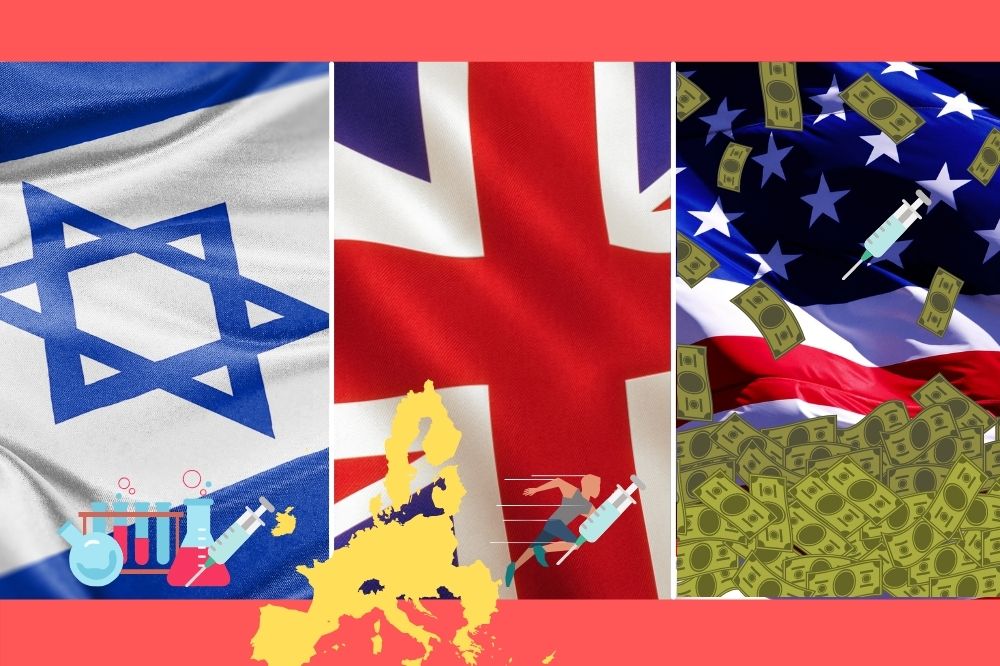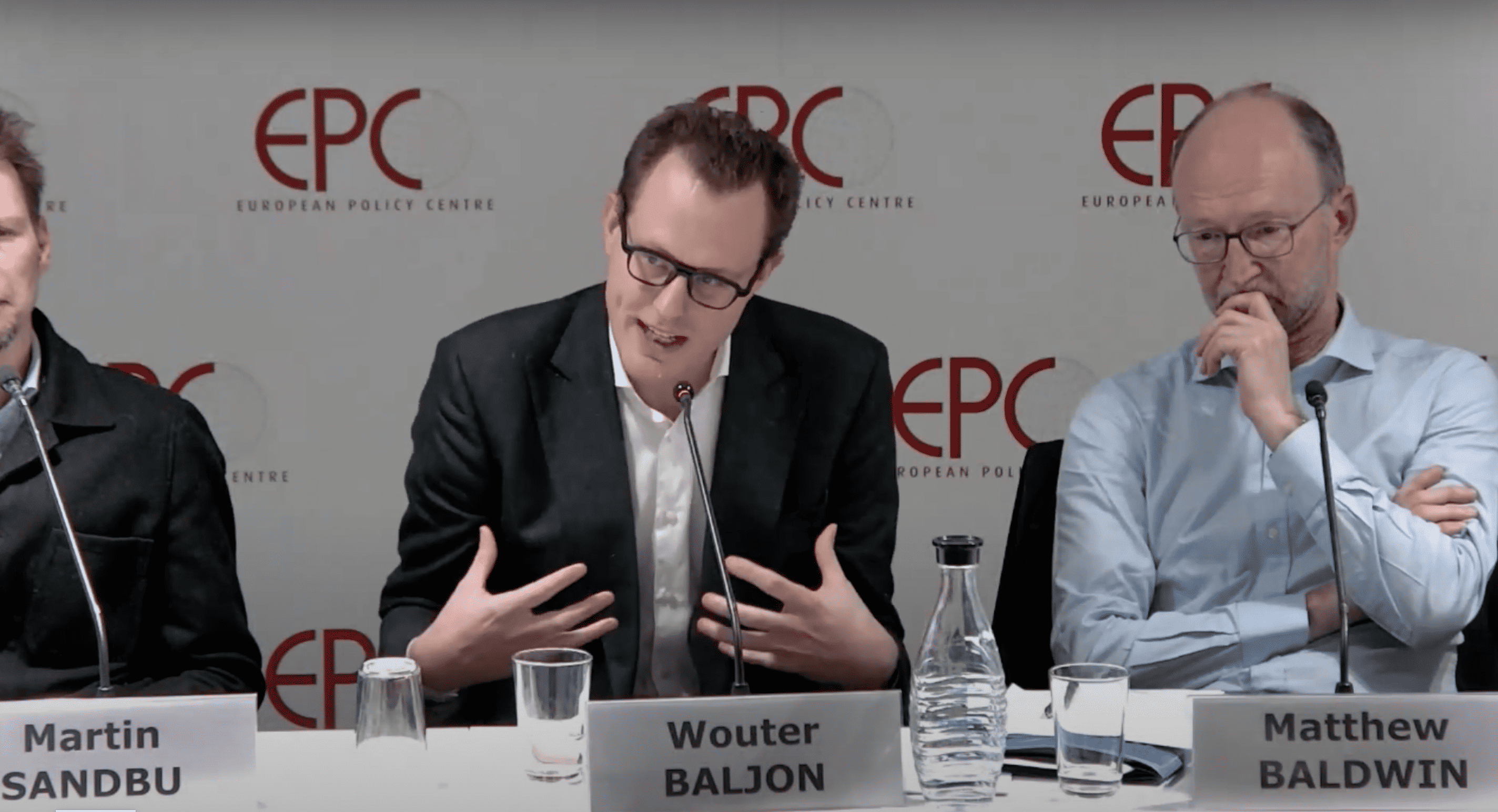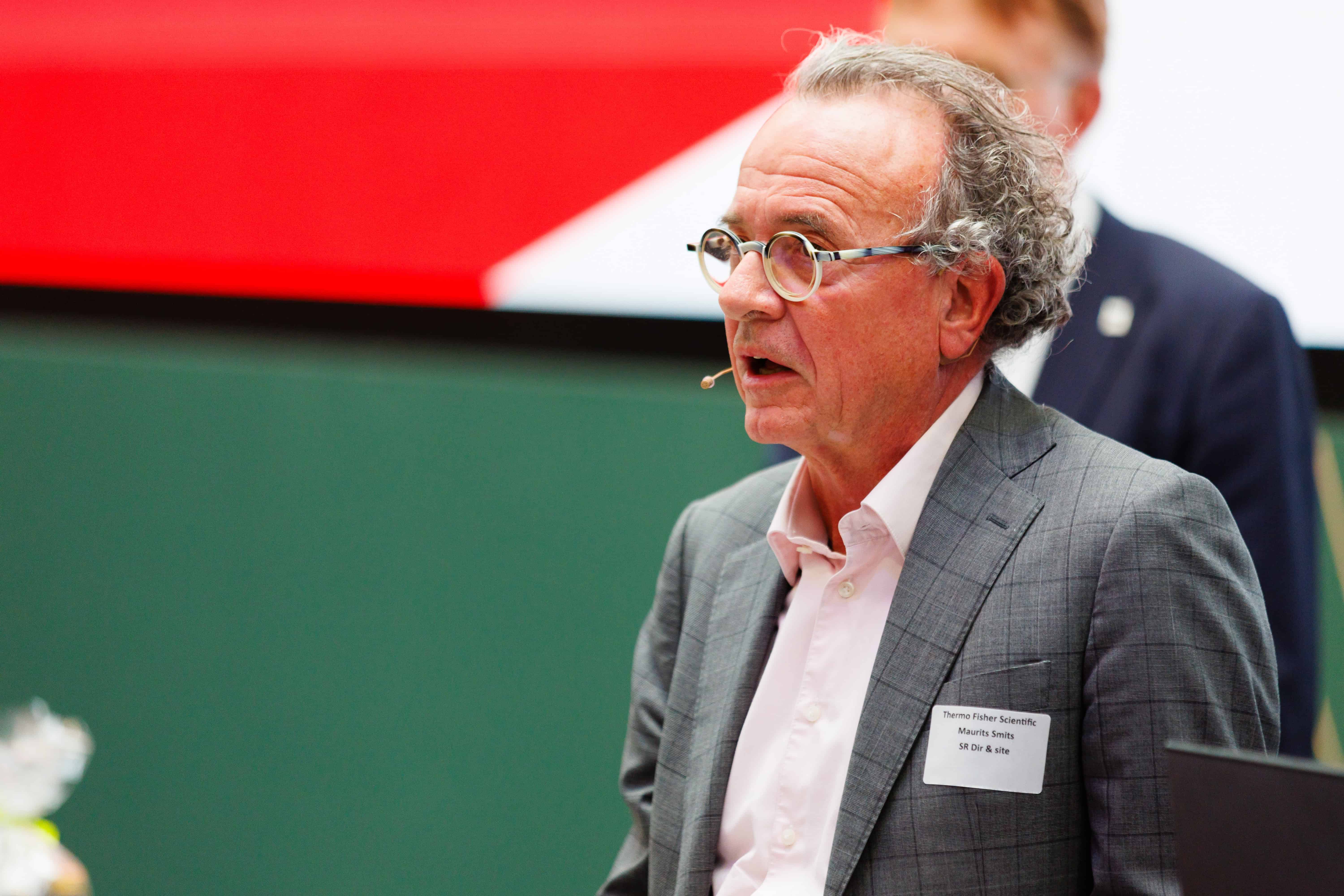
The countries that will be able to be freed from the lockdown the quickest because they have administered enough corona vaccines to achieve herd immunity do not appear to be in the European Union. Procrastination in European Union countries starred in the lead role in last week’s edition. This edition is flipping that premise on its head. How did the global vaccination champions actually manage to get hold of such a colossal supply?
To kick off – how is Europe doing at the moment? Most member states now have around four percent of their population vaccinated. The lead that Great Britain has is increasing day by day. By now, the British have already vaccinated 19.4 per 100 members of the population.
The orange catch-up effort
While other countries were astounded by the initial snail’s pace of the Netherlands, at home in the Netherlands people watched with apprehension how the vaccination campaign was much further ahead everywhere else. Yet ever since the end of January, the gap with the others has been steadily closing in. At a mere 3.58 percent, the Netherlands is still below the EU average. However, our country did overtake Croatia, Austria, Luxembourg, France and the Czech Republic during the past week. How did they manage that? The Netherlands has stepped up the pace. It is expected that the Netherlands will reach the overall level of Belgium and Cyprus by next week.
Thanks to the large stockpile in the Dutch city of Oss, this acceleration can also be scaled up further if supplies suddenly become limited. Is the Netherlands the EU’s inoculation loser? That image has completely dissipated thanks to these latest figures. This is in spite of the fact that, as a result of the GGD vaccination lanes being closed on Sundays due to the wintry weather, the daily score based on the rolling average was a lot lower than it could have been.
Last place to middle-of-the-road
But how fast is the Netherlands really vaccinating? The normally quite reliable dataset from Our World in Data still shows an outdated vaccination rate. In it, the estimated number of injections in long-term healthcare facilities has not been added to the total score. Nevertheless, you can safely count these here because the Netherlands does vaccinate thousands of people in these homes. And on that basis, the Netherlands has not been among those lagging behind for quite some time. It has also been able to shift up a gear week after week as one of the very few countries that have managed to do so. In other words, a veritable catch-up is taking place.
Despite, or indeed thanks to, the campaign’s awkward start, the Netherlands still has a fairly hefty stockpile of serums. Only 57 percent of the total planned number of just over the million had received an injection as of February 10. Many EU countries are currently unable to vaccinate at full speed due to disappointing supply quantities. Some additional supplies have come in. Yet the storage depots in some member states are still practically empty.
On the graph below, the number of administered vaccines listed in Our World in Data is compared to the number distributed as listed on the Vaccine Tracker from the ECDC. In the case of France, data from their own dashboard has been used. A new downturn in supplies would cause the biggest headaches in Austria, Denmark and Lithuania.

Lonely at the top
Yet the percentages, speed and stockpiles of EU member states pale in comparison to those of Israel, United Kingdom and the United States. These countries seem to be playing in a higher league at the corona vaccination World Cup. This can be seen in the most recent top ten rankings of all countries. The picture of the past few weeks is still the same, the gap between Europe and the global top is steadily widening.

Tons of money and biomedical data
The key question in last week’s edition was: Why is progress so slow in the EU? The short answer is: Weak, scattered and scarce negotiation efforts with a few pharmaceutical companies. Consequently, Israel, the United States and the United Kingdom cashed in on a place in the priority lane. As such, Israel in particular need not worry at all about an empty warehouse owing to a rather unorthodox yet creative solution.
Israel has been the streets-ahead front-runner from the outset. The country already turned up at the start with a 3-0 lead. A diminutive population combined with a huge army that was capable of actually carrying out the operation. Big pharma companies already had their bulk deals in place for months. Yet Israel managed to woo Pfizer with a big bag of money. Plus the offer to make the entire country available as a test population for the first large-scale corona vaccination campaign.
By giving access to the privacy-sensitive biomedical data of their own populace, the impact of the drug becomes measurable in general practice. It was announced last year that 60 to 90 percent of the population must be vaccinated to ensure that there is sufficient herd immunity against corona. This margin is so wide because it is difficult to estimate the impact of a new virus, as no ‘field studies’ on such a large scale were (or could be) carried out. Nor can computer models accurately assess everything.
What is galling is that the Palestinian community – with the exception of a measly 5,000 doses – is forced to make do with a role as the “control group” on the sidelines of the fastest mass vaccination campaign in history.
Encouraging results
“Israel’s small size combined with its advanced healthcare system make it the ideal candidate to map the effect on an entire population.” Jerica Pitts of Pfizer told NPR. As a result, the findings in the ‘test field’ will serve as a basis for the rest of the world. The initial results are very encouraging. Although the virus is still rampant in Israel, as Reuters reports, the number of hospitalizations among people over 60 declined by 39 percent between January 16 and February 6.
What has also become clear in recent weeks is how long it takes for a human being to be fully protected against Covid-19. Full protection is a fact 22 days after the second Pfizer dose. The serum needs a bit of time to take effect. Even after the first injection appointment, the risk of a coronavirus infection, severe symptoms and death diminish with each passing day.
After four out of five of the elderly have been vaccinated, the impact is also visible in the national figures. It is also expected to go down even more sharply over the coming weeks. The FireMaster equivalent signal for the pandemic is projected to follow in March or April.
British poker bluff
Enough vaccines for 9 million residents are more readily arranged than those for a population of 66 million. Yet the United Kingdom is also having very few problems scaling up the pace on a daily basis. There are no empty storehouses here either. Even in absolute terms, they have more vaccines than the European Union – which is almost seven times the size of their population. Some of the vaccines are produced domestically. However, because capacity was not enough to meet the very ambitious supply demands of the British, they also looked across the border.
Help came from the continent from factories in Belgium, the Netherlands and Germany. Who, in what seems like a Kafkaesque situation, transport thousands of boxes of vaccines across the Channel each and every day. This Kafkaesque situation is greeted with loud laughter amongst Brexit sympathizers. But how could this happen?
The British had finalized the deal with AstraZeneca for a pre-order of 100 million doses three months earlier than the EU. They also offered a higher price per dose. Accordingly, their “own” Oxford vaccine has been approved since New Year’s Day and is immediately readily available. By also forcing quicker deals with Pfizer and Moderna, the British were able to get started in mid-December and their lead is increasing every day.
Hard Brexit with a deal
This shrewd, ruthless negotiation led to significant anger amongst European leaders that was in turn directed at EU President Ursula von der Leyen. She acknowledged her mistakes this week for her role in the conflict with AstraZeneca. This entailed blocking “Belgian vaccines for the British market” as a threat and the stultifying tug-of-war that led to cherry-picking the most desirable outcomes.
The origins of this pharmaceutical soap opera date back to about a year ago. This was after biomedical scientists were sent word of a mysterious lung virus from Wuhan that might well cause mayhem outside of China. How did humankind succeed in developing a working serum in just one year that has now been injected into hundreds of millions of arms?
American adventurism
Sufficient numbers of vaccines are more easily arranged for 66 million residents than for a population of 328 million. The United States has the most extensive vaccine stockpiles and has already administered 43 million doses in its own country as of December. The Americans also managed to secure themselves preferential treatment by partnering with pharmaceutical companies as early as February last year.
In May, the government of former President Trump launched Operation Warp Speed with the aim of ‘incentivising’ pharmaceutical companies to come up with a working vaccine as quickly as possible. How do you get pharmaceutical companies on board? Money. Lots and lots of money. By operating shoulder to shoulder with support from the US government, these companies ran less risk. Money was no object in the arms race against corona.
This was gratefully capitalized on. Johnson&Johnson received US$456 million, Moderna US$955 million, AstraZeneca and Novavax each received US$1.6 billion, and Sanofi was sponsored for US$2.1 billion. Given that Washington DC worked more closely with the pharmaceutical companies and invested billions in development, the Americans secured themselves preferential treatment with five of the six vaccine manufacturers that also (will) supply the EU. This was negotiated at the end of August after the Brussels bureaucrats had returned from a ‘well-deserved’ summer vacation after the first wave.
Cheapskates for cheap stakes
Six months later, Moderna vaccines for Americans were rolling off the assembly line in their millions every day. Vaccines that were primarily intended for their own market. Pfizer, which decided not to join Operation Warp Speed, received a pre-order from the White House in June: US$19.50 per dose for 100 million units? Fine!
It wasn’t until September that representatives of the European Union reached an agreement with the company that would be the first to market its drug. They offered US$18.90 per dose. Having saved 60 cents, the EU took a seat in the waiting room with a number in its hand. The Pfizer factories were running at full speed to deliver on their promise to the previous person in line, the ones with the deeper pockets ….
The pecking order for vaccinations is now firmly established: Israel at nr. 1 for the Pfizer experiment, followed by the Brits, Americans and a few rich Gulf states. Then the EU and Canada (which is in a similar boat) are following behind.
The rest of the world will have to make do with alternatives from Russia and China or leftovers from suppliers that the Western world is actually interested in. For the time being, the poorest countries can forget about the most sought-after vials in February 2021.
As is often the case during the corona crisis, the governments with the most proactive plans of action achieved the best results, that is, as far as vaccinations go.








